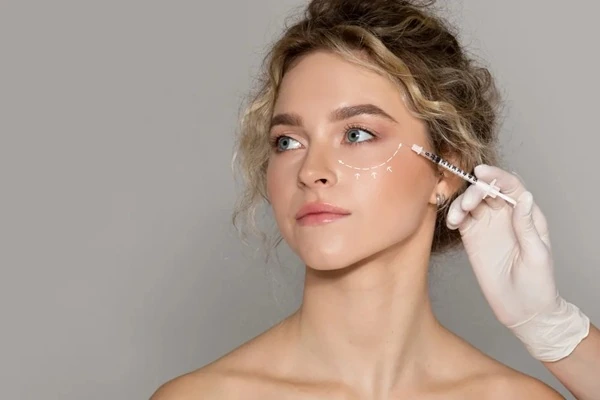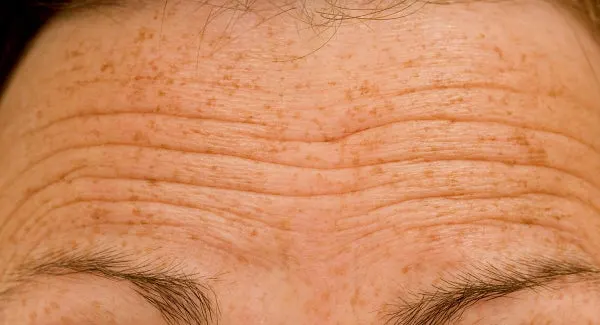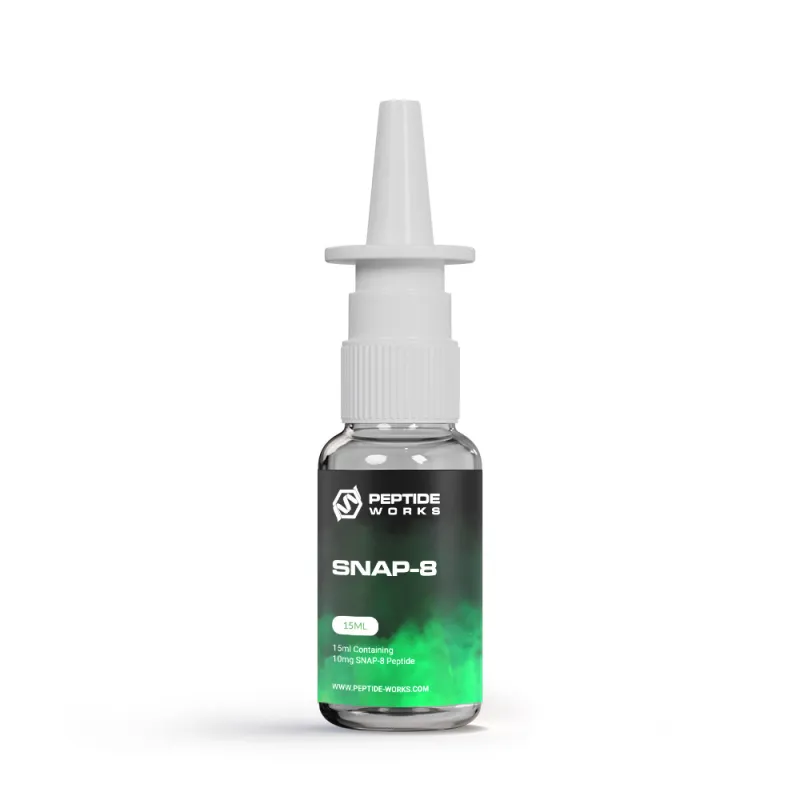
PROMO!
First order? Get 10% OFF with this code: 1storder
Written by

When people hear the word “Botox,” they often picture smooth, wrinkle-free skin that seems to defy age. But in recent years, researchers have been exploring alternatives that don’t involve injections. One peptide that has gained attention is SNAP-8, sometimes called a potential Botox substitute in scientific studies.
While Botox itself is a well-known medical treatment, peptides like SNAP-8 are being investigated for how they may mimic some of its effects on muscle tension and expression lines.
In this article, we’ll look at how SNAP-8 is being studied as a possible Botox alternative, what role peptides like GHK-Cu may play in skin research, and why scientists are looking at muscle relaxation as a key factor in reducing expression lines.
Explore SNAP-8 Peptide from Peptide Works, studied as a Botox substitute for its role in reducing expression lines and muscle tension.

SNAP-8, also called acetyl octapeptide-3, is often described as a Botox substitute because of how it functions at a molecular level. It mimics a fragment of the SNAP-25 protein and competes for its position in the SNARE complex.
This process can reduce the release of acetylcholine, the neurotransmitter that signals muscle contractions. With fewer contraction signals, facial muscle activity may appear less intense, which can make expression lines such as crow’s feet or forehead creases look reduced under study conditions.
Another peptide GHK-Cu has been investigated for its role in collagen production, elastin production, and skin repair. Together, these findings show why SNAP-8 and related peptides continue to be explored in studies of skin physiology and cellular activity. This connection between facial muscle activity and visible skin changes leads directly into the subject of expression lines.
Expression lines form when facial muscles move over and over, such as in smiling or frowning. With age, these movements strain the skin, and folds can stay visible even when the face is at rest. Areas like the forehead and around the eyes are most likely to show these changes first.
In research settings, anti-aging peptides like SNAP-8 are studied as possible Botox substitutes because of how they may influence muscle contraction signals linked to these lines and contribute to smoother appearance and more youthful appearance in study results.
Other compounds, like GHK-Cu, are explored for their potential role in supporting skin elasticity, skin tone, and growth factors involved in maintaining radiant glow. Since collagen is central to firmness, it is important to understand the role of GHK-Cu in skin appearance.
GHK-Cu peptide is a small copper-binding complex that has been investigated for its impact on collagen and overall skin texture. Researchers note that it can activate fibroblasts, the cells responsible for producing collagen and elastin. This may improve firmness and density, qualities often reduced as signs of aging appear.
These effects connect to why Botox substitutes like SNAP-8 are studied, since both target visible signs linked to expression lines. In controlled studies, GHK-Cu has also been linked to antioxidant activity and tissue repair, factors that support skin resilience.
By renewing collagen and aiding elasticity, this peptide provides another layer of understanding about skin changes tied to wrinkle depth. Wrinkle depth itself is another important marker that helps explain how visible lines develop and change.
Discover GHK-Cu Peptide from Peptide Works, investigated for collagen support, tissue repair, and its contribution to skin firmness.

Wrinkle depth shows how far a line extends into the skin. Fine lines stay near the surface, while deeper folds appear when collagen weakens and facial muscles contract again and again. Tracking depth is an important part of research into Botox substitutes, since it reveals how visible changes develop with age.
The role of SNAP-8 peptide has been investigated for how it may reduce wrinkle depth by limiting the signals that trigger muscle contractions. This focus allows researchers to see whether easing contraction intensity can soften the appearance of deeper creases when compared with surface-level fine lines.
This brings attention to how SNAP-8 may act differently on fine lines compared with deeper wrinkles.
Fine lines are early, shallow creases that appear on the surface when facial muscles move repeatedly. They are dynamic at first and often fade when the face is at rest. Deeper wrinkles form later, becoming static, as collagen weakens and muscle contraction marks set more permanently into the skin.
Understanding this difference is important in Botox substitute research. SNAP-8 peptide works by competing in the SNARE complex, which reduces acetylcholine release and lowers muscle contraction signals. This action is most noticeable on fine lines, where less contraction means less folding of the skin.
On deeper wrinkles, results are limited because structural loss of collagen and elastin makes creases harder to soften. Measuring severity across both types allows researchers to better evaluate SNAP-8’s potential role as a Botox substitute. Comparing SNAP-8 to Botox injections themselves provides further perspective.

Botox injections involve placing a purified neurotoxin directly into facial muscles. Because the dose must be precise, the procedure is always carried out in a clinical setting. The outcome is strong and fast: muscle activity weakens within a few days, and smoother skin can remain for three to six months. Still, this approach is invasive, and side effects such as swelling, bruising, or uneven results are not uncommon in medical reports about the effects of Botox and dermal fillers.
SNAP-8 peptide is being explored as a non-invasive Botox substitute. Rather than being injected, it is applied at the surface, where its effect depends on stability, delivery method, and concentration. Visible changes build more slowly, often after weeks in controlled studies.
This difference sets the two apart: Botox works through direct intervention, while SNAP-8 is investigated for gradual improvements tied to formulation design. These differences highlight why many researchers are considering how SNAP-8 might shape future approaches to skincare routine and alternative treatments in peptide science.
SNAP-8 is gaining attention as a non-invasive Botox substitute and may one day complement, or even extend beyond, the role of injections. Botox still sets the standard for quick wrinkle reduction, yet ongoing research is looking at how SNAP-8 might deliver slower, more targeted changes.
At Peptide Works, we provide SNAP-8, GHK-Cu, and other compounds for research purposes only, with worldwide shipping. As this work continues, peptides like SNAP-8 could play a bigger role in the next wave of cosmetic science.
All peptides and compounds mentioned are strictly for research purposes only and not for human use.
[1] Olsson SE, Sreepad B, Lee T, Fasih M, Fijany A. Public Interest in Acetyl Hexapeptide-8: Longitudinal Analysis. JMIR Dermatol. 2024 Feb 20;7:e54217.
[2] Satriyasa BK. Botulinum toxin (Botox) A for reducing the appearance of facial wrinkles: a literature review of clinical use and pharmacological aspect. Clin Cosmet Investig Dermatol. 2019 Apr 10;12:223-228.
[3] Nguyen TQ, Zahr AS, Kononov T, Ablon G. A Randomized, Double-blind, Placebo-controlled Clinical Study Investigating the Efficacy and Tolerability of a Peptide Serum Targeting Expression Lines. J Clin Aesthet Dermatol. 2021 May;14(5):14-21. Epub 2021 May 1. PMID: 34188744; PMCID: PMC8211334.
[4] Mortazavi SM, Mohammadi Vadoud SA, Moghimi HR. Topically applied GHK as an anti-wrinkle peptide: Advantages, problems and prospective. Bioimpacts. 2024 Apr 28;15:30071.
ALL CONTENT AND PRODUCT INFORMATION AVAILABLE ON THIS WEBSITE IS FOR EDUCATIONAL PURPOSES ONLY.
DISCLAIMER: These products are intended solely as a research chemical only. This classification allows for their use only for research development and laboratory studies. The information available on our Peptide Works website: https://peptide-works.com/ is provided for educational purposes only. These products are not for human or animal use or consumption in any manner. Handling of these products should be limited to suitably qualified professionals. They are not to be classified as a drug, food, cosmetic, or medicinal product and must not be mislabelled or used as such.
Peptide Works
Related Articles

How effective could Orexin Addiction Therapy be?
Have you ever wondered why some people find it so hard to stop addictive habits, even when they truly want

Can NAD Therapy Improve Cognitive Performance?
NAD Therapy is gaining attention in research for its possible role in brain health. NAD+ (nicotinamide adenine dinucleotide) is a

Enhancing Energy with NAD+ Supplements
Energy is the driving force behind focus, movement, and recovery. When cells have less energy to work with, the body